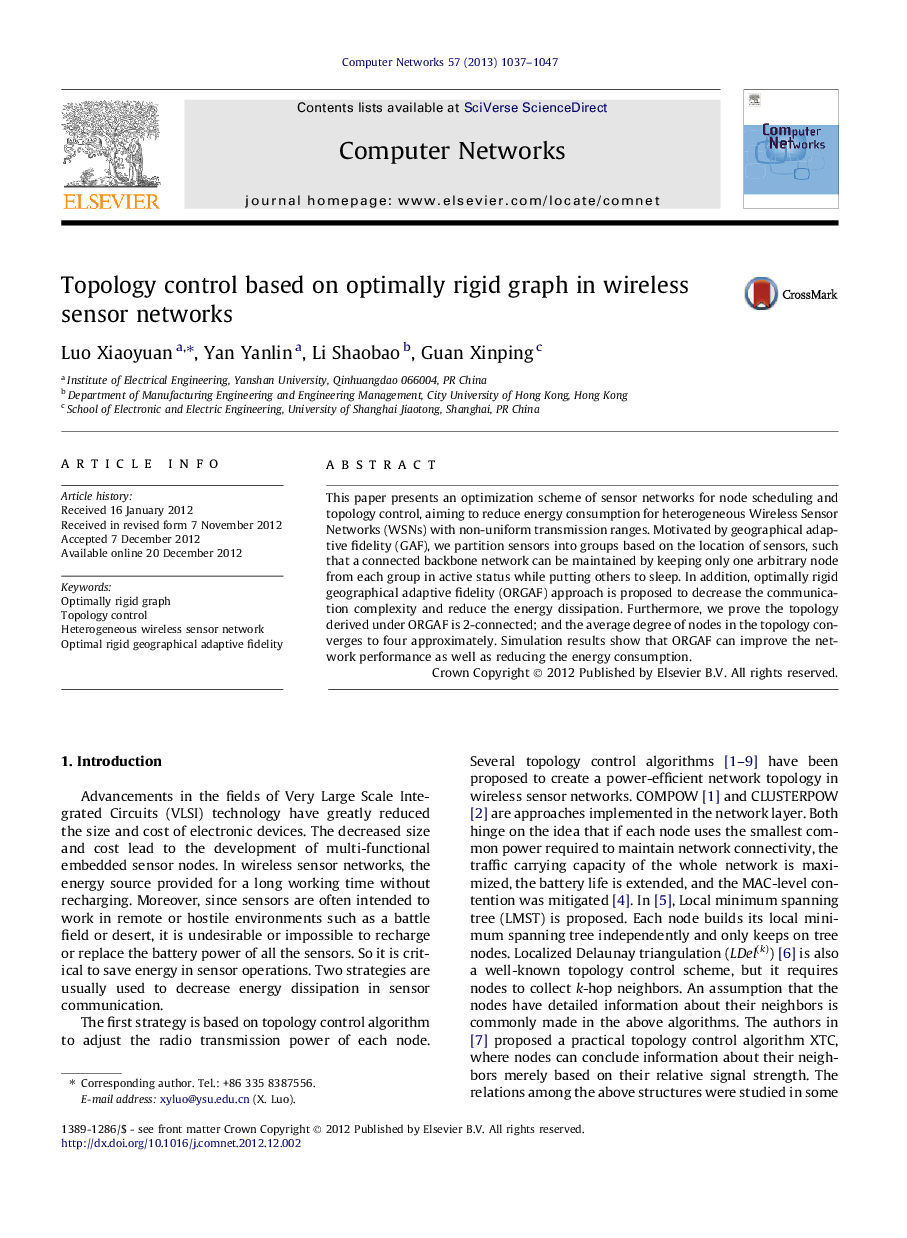| Article ID | Journal | Published Year | Pages | File Type |
|---|---|---|---|---|
| 451931 | Computer Networks | 2013 | 11 Pages |
This paper presents an optimization scheme of sensor networks for node scheduling and topology control, aiming to reduce energy consumption for heterogeneous Wireless Sensor Networks (WSNs) with non-uniform transmission ranges. Motivated by geographical adaptive fidelity (GAF), we partition sensors into groups based on the location of sensors, such that a connected backbone network can be maintained by keeping only one arbitrary node from each group in active status while putting others to sleep. In addition, optimally rigid geographical adaptive fidelity (ORGAF) approach is proposed to decrease the communication complexity and reduce the energy dissipation. Furthermore, we prove the topology derived under ORGAF is 2-connected; and the average degree of nodes in the topology converges to four approximately. Simulation results show that ORGAF can improve the network performance as well as reducing the energy consumption.
